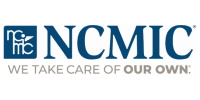Historic Pro-Chiropractic Provisions Will Become Law
(Arlington, Va.) -- The U.S. House of Representatives passed HR 3590, the Senate-passed version of national health care reform legislation, tonight. The final vote took place after a nearly 13 month battle, culminating in a contentious struggle to garner votes from undecided members of the Democratic majority in Congress.
This means that the provisions contained in HR 3590 now only await President Obama’s signature to be enacted into law. These provisions include an important provider non-discrimination provision long championed by the American Chiropractic Association (ACA). Incorporation of this provider non-discrimination provision, also known as the “Harkin Amendment,” was achieved primarily due to the efforts of Sen. Tom Harkin (D-Iowa), with help from other key players such as Sen. Chris Dodd (D-Connecticut). Although he did not support the final bill overall, Sen. Orrin Hatch (R-Utah) also lent his support for the advancement of the non-discrimination provision.
“Regardless of how you feel about this legislation and its overall impact on the nation, it has to be recognized as an historic first for the chiropractic profession. We now have a federal law applicable to ERISA plans that makes it against the law for insurance companies to discriminate against Doctors of Chiropractic and other providers relative to their participation and coverage in health plans. Such discrimination based on a provider's license is inappropriate and now must stop,” said ACA president, Dr. Rick McMichael. “While this does not fully level the playing field for doctors of chiropractic in our health care system, this is a highly significant step that has the potential for positive, long-range impact on the profession and the patients we serve. Congress has finally addressed the issue of provider discrimination based on one's license, and they have said that such discrimination must stop.”
The provider non-discrimination provision (Section 2706) to be enacted into law reads in part: “A group health plan and a health insurance issuer offering group or individual health insurance coverage shall not discriminate with respect to participation under the plan or coverage against any health care provider who is acting within the scope of that provider’s license or certification under applicable State law.”
Regarding this provision, John Falardeau, ACA’s Vice President of Government Relations said, “The Harkin non-discrimination language will be applicable to all health benefit plans both insured and self-insured. National health care reform is designed to eventually cover 30 million currently uninsured Americans. The non-discrimination language will, over time, apply to those individuals as well. However, that number of covered individuals pales in comparison to the 55 percent of workers who are currently covered by self-insured plans that will be affected by the Harkin non-discrimination language. The potential impact in this regard cannot be overstated.”
Additionally, the legislation passed by the House includes two other provisions that impact the chiropractic profession. Doctors of chiropractic are specifically included as potential members of interdisciplinary community health teams. These teams support the development of medical homes by increasing access to comprehensive, community based, coordinated care. Community health teams are integrated teams of providers that include primary care providers, specialists, other clinicians, licensed integrative health professionals and community resources to enhance patient care, wellness and lifestyle improvements. The language in the bill ensures that doctors of chiropractic can be included in these patient-centered, holistic teams. Dr. McMichael noted, “This language was a critical inclusion to give doctors of chiropractic increased opportunities to be fully engaged as part of the health care team.”
Furthermore, the legislation establishes a National Health Care Workforce Commission to examine current and projected needs in the health care workforce. The commission specifically includes doctors of chiropractic by defining them as part of the health care workforce, and includes them in the definition of health professionals. In addition, chiropractic colleges are included among the health professional training schools to be studied. The National Health Care Workforce Commission is tasked with providing comprehensive, unbiased information to Congress and the Obama Administration about how to align federal health care workforce resources with national needs. Congress will use this information when providing appropriations to discretionary programs or in restructuring other federal funding. The language in the bill guarantees that the need for doctors of chiropractic will be addressed when considering federal health care workforce programs, another very important inclusion.
Assuming final modifications to the bill are ultimately agreed to by the Senate; ACA will then publish a detailed analysis of the entire legislation, including a timeline for when certain provisions become effective. Additionally, ACA will maintain an active watch over the implementation of the legislation over the next several years and will offer its views regarding proposed regulations that will likely be developed in order to fully implement the new law. ACA will also respond to any future legislation such as “technical corrections” and other modifications that might be considered. Dr. McMichael noted, “Our partners on the Chiropractic Summit were important team members in securing these critical inclusions for the benefit of our profession and our doctors. We thank all team members for their good collaborative work on this major effort and future efforts to come.”
- Home
- About
- Find a Doctor
- Membership
- Education
- News
- Newsletter
- Conventions & Symposiums
- Webinars
- Positive Press (F4CP) ↪
- Insurance and Medicare ⚿
- New Practitioners ⚿
- Center for Excellence ⚿
- Informative Links
- Mandated Reporter Training↪
- Leadership
- Officers and Regional Directors
- Districts
- District Officers ⚿
- District Map
- District 1 (Manhattan)
- District 2 (Brooklyn)
- District 3 (Queens)
- District 4 (Bronx)
- District 5 (Staten Island)
- District 6 (Nassau)
- District 7 (Suffolk)
- District 8 (Westchester)
- District 9 (Mid-Hudson)
- District 10 (Capital Region)
- District 11 (Mohawk Valley)
- District 12 (Central NY)
- District 13 (Binghamton Area)
- District 14 (Rockland County)
- District 15 (Finger Lakes)
- District 16 (Southern Tier)
- District 17 (Western NY)
- Committees
- Bylaws ⚿
- Code of Ethics ⚿
- Elections ⚿
- Advocacy
- Sponsors
- Classifieds




